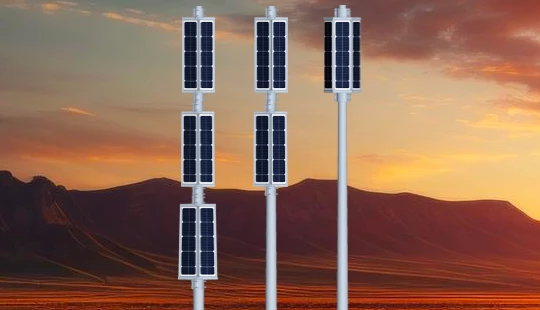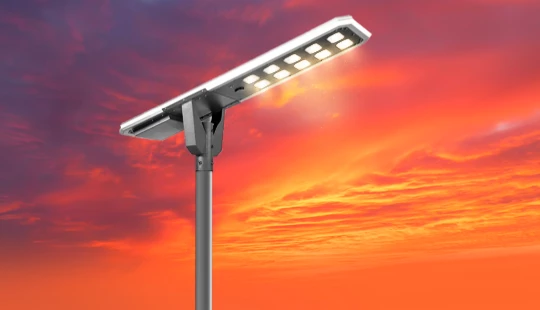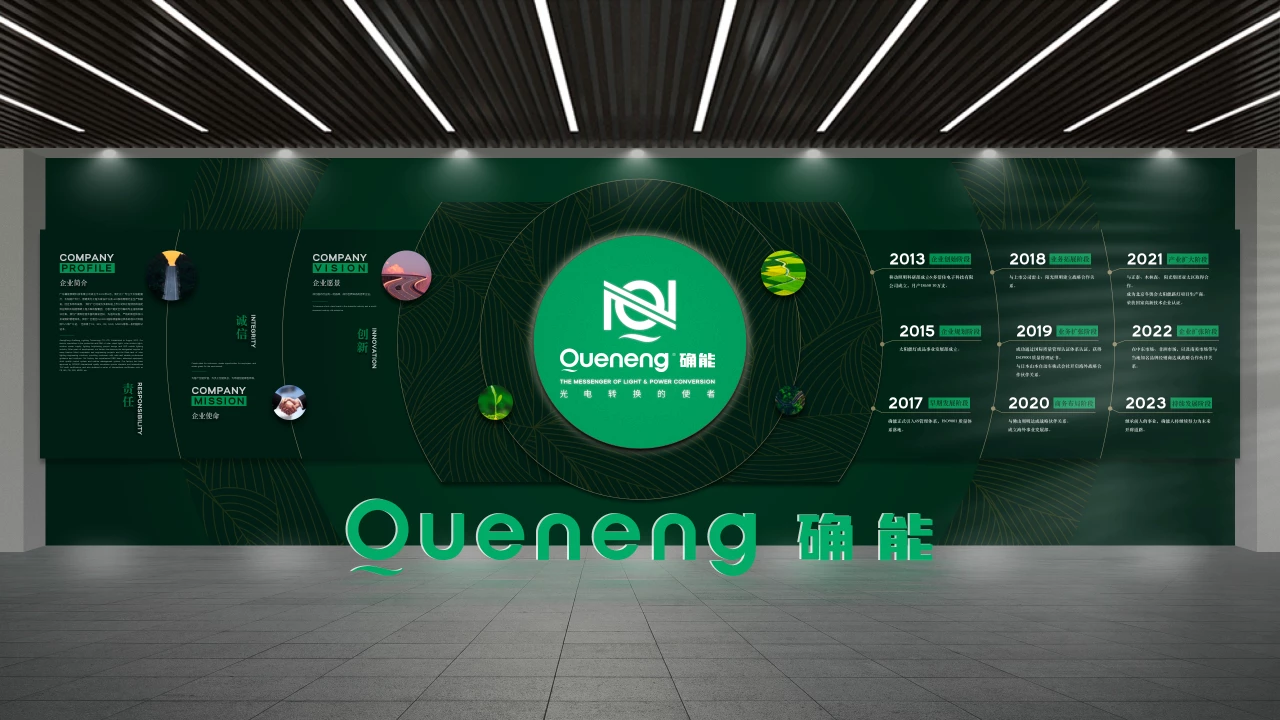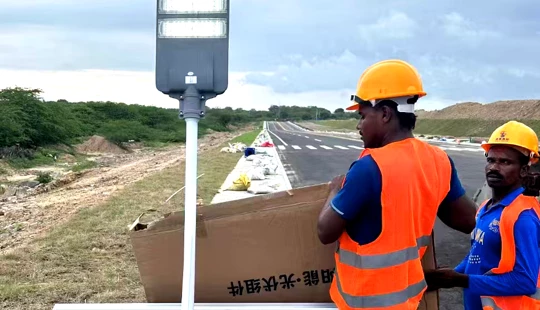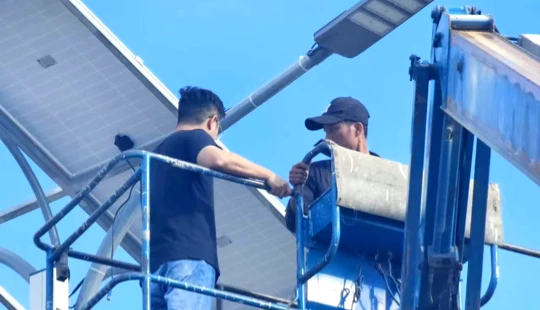All-in-One Solar Street Lights Explained | Queneng
What is an All-in-One Solar Street Light? A Comprehensive Guide by Queneng
This comprehensive guide answers frequently asked questions about all-in-one solar street lights, offering a detailed understanding of this increasingly popular lighting solution.
What are the components of an all-in-one solar street light?
An all-in-one solar street light integrates all necessary components into a single, self-contained unit. These typically include:
* Solar Panel: Captures sunlight and converts it into DC electricity. The size and efficiency of the panel determine the light's output and operational duration.
* Battery: Stores the energy generated by the solar panel for use at night or during periods of low sunlight. Lithium-ion batteries are commonly used due to their longevity and efficiency.
* LED Light: Provides the actual illumination. LEDs are energy-efficient and long-lasting, making them ideal for solar applications.
* Controller: Manages the charging and discharging of the battery, regulates the light output, and often includes features like motion sensors or timers.
* Pole/Mounting System: Provides support for the entire unit. Different designs cater to various installation needs.
How long do all-in-one solar street lights last?
The lifespan of an all-in-one solar street light depends on several factors, including:
* Battery Life: Lithium-ion batteries generally last 3-5 years before requiring replacement.
* LED Lifespan: LEDs can last for 50,000 hours or more.
* Solar Panel Durability: High-quality solar panels can maintain their efficiency for 20-25 years.
Regular maintenance, such as cleaning the solar panel, can extend the overall lifespan of the system.
How much do all-in-one solar street lights cost?
The cost of all-in-one solar street lights varies depending on several factors:
* Lumens/Brightness: Higher lumen output generally equates to a higher price.
* Battery Capacity: Larger battery capacity allows for longer operation, but increases the cost.
* Features: Additional features such as motion sensors or remote control capabilities add to the expense.
* Brand and Quality: Reputable brands typically offer higher quality components and longer warranties, impacting the initial cost.
It’s crucial to compare prices from multiple reputable suppliers to find the best value for your needs.
How are all-in-one solar street lights installed?
Installation is typically straightforward, but may vary depending on the specific model and location:
* Site Preparation: Ensure a suitable location with adequate sunlight exposure.
* Pole Installation (if applicable): This might require professional assistance, especially for taller poles.
* Unit Mounting: Securely attach the all-in-one unit to the pole or mounting bracket.
* Wiring (minimal): Usually, minimal wiring is involved, simplifying the installation process.
Some models allow for easy DIY installation, while others might require professional help.
How much sunlight do all-in-one solar street lights need?
The required sunlight exposure varies by model, but generally, at least 4-6 hours of direct sunlight per day is needed for optimal charging. Consider the location’s average daily sunlight hours when selecting a system. Shading from trees or buildings can significantly impact performance.
What are the advantages of all-in-one solar street lights?
All-in-one solar street lights offer numerous advantages:
* Cost-Effective: Reduce energy bills compared to traditional grid-powered lights.
* Environmentally Friendly: Reduce carbon emissions.
* Easy Installation: Often simpler to install than grid-powered systems.
* Low Maintenance: Require minimal maintenance compared to other street lighting solutions.
* Reliable Operation: Provide consistent illumination regardless of grid availability.
Are all-in-one solar street lights suitable for my location?
The suitability depends on several factors:
* Sunlight Availability: Adequate sunlight is essential for effective charging.
* Climate Conditions: Extreme weather conditions might impact performance.
* Security Considerations: Consider potential vandalism or theft.
* Local Regulations: Check any relevant building codes or permits required.
This information provides a thorough understanding of all-in-one solar street lights. For specific product information and to find the best solution for your needs, contact Queneng.

Have more questions about our products or services?
The latest hot news you might like

Discover how solar panels power street lights, exploring the technology behind solar energy conversion, storage systems, and how solar-powered street lights are revolutionizing urban and rural lighting solutions.

Learn how AC Solar Hybrid Street Lights work, their advantages, disadvantages, system behavior in low-sunlight conditions, and why hybrid technology is ideal for regions with unstable sunlight.

Municipalities around the world are increasingly adopting solar-powered streetlights as part of their urban development strategies. Rising energy costs, the need for sustainable infrastructure, and government green initiatives are driving cities to switch from traditional street lighting to advanced LED solar streetlights.
Queneng Lighting provides municipalities with cost-effective, energy-efficient, and durable solar lighting solutions, ensuring safe and sustainable public spaces.
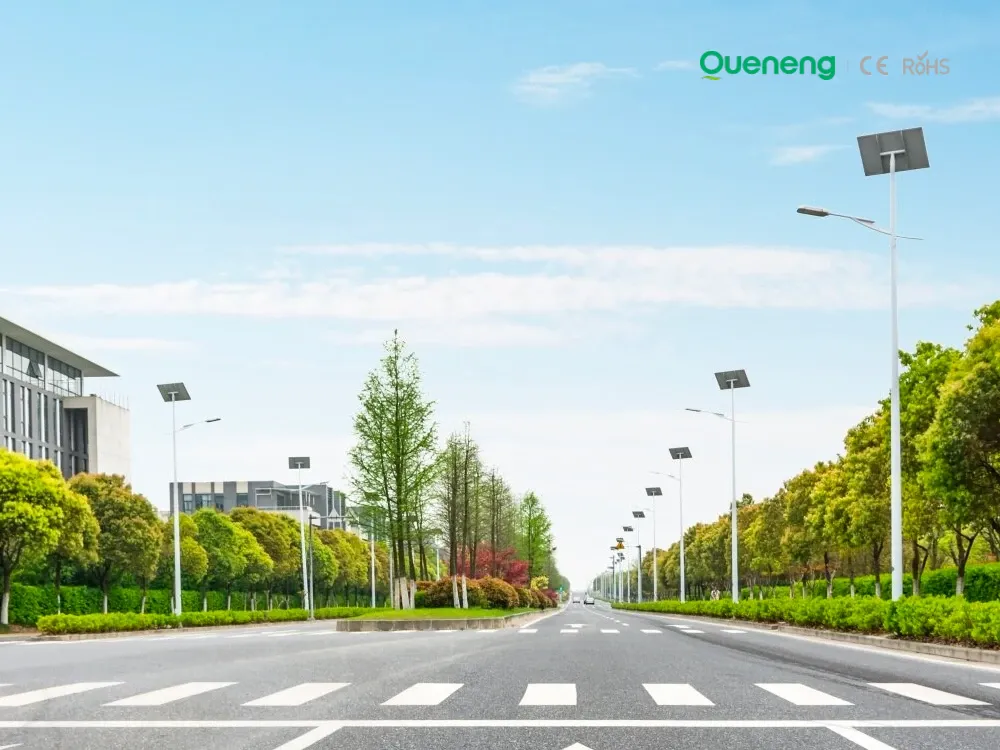
In recent years, the purchase of solar streetlights for municipalities has become a growing trend across the globe. Local governments are under pressure to reduce public expenditure, promote green energy, and create safer communities. Solar streetlights provide a reliable, cost-effective, and sustainable solution that meets these needs. Queneng Lighting, as a leading solar street lighting manufacturer, has supported multiple municipal projects worldwide with customized and energy-efficient solutions.
FAQ
Solar Street Light Luda
What are the key benefits of using LED lights in Luda solar street lights?
LED lights used in Luda solar street lights are highly energy-efficient, providing bright illumination while using less power compared to traditional lighting solutions. LEDs also have a longer lifespan, reducing the need for frequent bulb replacements, and they generate less heat, further enhancing their energy efficiency and performance in outdoor conditions.
Solar Street Light Luxian
What makes Luxian solar street lights more cost-effective than traditional street lights?
Luxian solar street lights are cost-effective because they require no external electrical connections, reducing installation costs. Their operation is entirely solar-powered, which eliminates ongoing electricity bills. The long lifespan of the LED bulbs and solar panels, combined with minimal maintenance needs, further reduces the total cost of ownership.
Batteries and the environment
What impact do batteries have on the environment?
What are the “green batteries” currently being used and researched?
Solar Street Light Lufeng
Are Lufeng solar street lights compatible with different outdoor environments?
Yes, Lufeng solar street lights are highly versatile and can be used in a variety of outdoor environments. They are perfect for urban streets, residential areas, rural roads, parks, and recreational spaces. Their durable design ensures they can function reliably in diverse weather conditions and geographical locations.
Sustainability
If the light or battery fails, can it be replaced individually?
Yes. Queneng’s solar street lights are designed with a modular structure, so components such as photovoltaic panels, batteries, lights, and controllers can be replaced individually, making maintenance convenient and cost-effective.


Queneng's Luzhou Solar Street Light provides sustainable, energy-efficient outdoor LED lighting. Powered by solar energy, it's a cost-effective and eco-friendly solution for illuminating streets and pathways. A reliable and durable LED solar street light.

Illuminate your outdoor spaces with the Solar Street Light, a cutting-edge solution combining advanced solar technology and energy-saving LED lighting.

Discover the Lulin High-Performance Solar Street Light by Queneng, a durable and energy-saving outdoor lighting solution. Designed for efficiency and reliability, it harnesses solar power to sustainably illuminate streets and pathways. Optimize your outdoor spaces today with Queneng's innovative solar street lighting technology.

The Solar Streetlights of Luhao for Municipalities are designed to deliver reliable, energy-efficient, and cost-effective public lighting solutions. Equipped with advanced LED technology, durable lithium batteries, and high-efficiency solar panels, these streetlights provide consistent illumination for roads, parks, residential areas, and government projects.

Our professional team is ready to answer any questions and provide personalized support for your project.
You can reach us via phone or email to learn more about Queneng’s solar lighting solutions. We look forward to working with you to promote clean energy solutions!
Rest assured that your privacy is important to us, and all information provided will be handled with the utmost confidentiality.
By clicking 'Send Inquiry Now' I agree to Queneng processing my personal data.
To see how to withdraw your consent, how to control your personal data and how we process it, please see our Privacy Policy and Terms of use.
Schedule a Meeting

Book a date and time that is convenient for you and conduct the session in advance.
Have more questions about our products or services?

